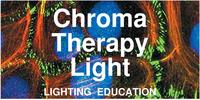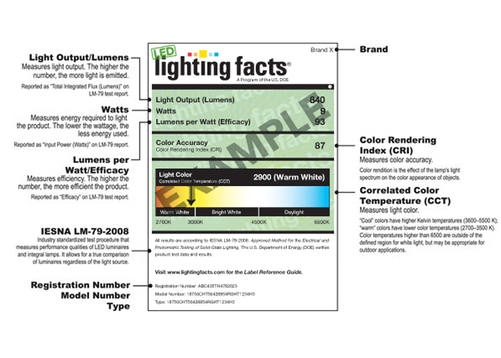LED Kelvin - Learning Objectives
What is Kelvin Temperature?Since LED light sources do not mimic daylight, there is a need to have some metrics for comparison to familiar light sources of daylight, incandescent and halogen.
Warm or cool temperature?Kelvin temperature is a number that indicates a point on the Warm - Cool Scale and connects the color temperature of a light source to a known value. The lower the number the warmer the light - up to 3000K is considered warm and seems yellowish or reddish.
5000K is considered cool indicating more bluish light. You would expect that the 4000 range to be in the middle, it will appear warm or cool depending on what is being illuminated, the surrounding wall color, and the amount of bias of the light source. What color is sunlight?Natural daylight ranges from 4000K to 27,000K. Daylight contains all colors, so we can see all colors, if the color is not in the light source, then it cannot reflect the color back to your eye or camera. See more about color wavelengths on our Color page.
Natural & Artificial Light measured in Kelvin
LED = Light Emitting Diodes - now the standard for new construction in the state of California, mandated by Title 24 energy code power limits, the most restrictive power allowances in the world, preceding adoption of similar codes worldwide. LED bulbs (or lamps as the lighting industry calls them, or Light Engines as the lighting designers call them) are inherently color biased. Since the Blue White chip was developed for the commercial market, manufactures have been struggling with achieving balanced white light. A combination of coatings, voltage, age, and manufacturing processes all affect an LED's spectral and lumen output, industry terms for color and brightness.
Good lighting design should always include analysis of color rendering, light intensity, beam spread, flicker, and glare. |
Retail packaging Lighting Facts includes CCT - Correlated Color Temperature a bar graph from warm to cool showing - Light Appearance in Kelvin
DOE - Department of Energy
|
- Home
-
- CHROMA Topics
- Color Spectrum - Light is Energy
- Color in Light
- Color in Nature
- Color in Paint
- Why does paint fade?
- Color Names & Meanings
- Color Phenomena
- Color Perception is Individual
- Color In Fashion
- Color for your home
- Color in Space
- Color Blindness
- Color Blind Interview
- Synesthesia
- Synesthete Deborah Borrowdale-Cox
- Synesthete Stephen Orr, BH&G Editor
-
- Circadian & THERAPY Topics
- Circadian Explained
- Circadian Ganglion Cells
- Circadian Melatonin
- Circadian Animals
- Circadian Research
- Autism & Lighting for the Spectrum
- Blue Light Dimming Apps
- Red Night Lights
- Vitamin D & Light
- SAD - Seasonal Affective Disorder
- Alzheimers and Light Therapy
- Photosensitivity - Light Sensitive Drugs
- Red Light Therapy
- Sleep & Lighting
- Dreams and Second Sleep
- NASA - Lighting in Space & Undersea
- Jet Lag
- Sunglasses
- Chakras
- Crystals, Minerals, & Gemstones
-
- LIGHTing Design Topics
- UV Germicidal Disinfection Light
- LED Lighting Facts Card
- CRI - Color Rendering Index
- LED TM-30
- LED Kelvin Color
- LED LPW
- LED Flicker
- LED Glare
- OLED - Organic LED
- Human Centric Lighting
- Lighting with Daylighting
- Lighting for Healthy Buildings & Zero Net Energy
- Lighting for Healthcare
- Lighting for Horticulture
- Lighting for Hospitality & LED Retrofits
- Lighting for Museums
- Lighting for Seniors & Low Vision
- Lighting Design Tips & Codes
- Parking Lot Lighting
- Solar Lighting for Humanity & World Health
- Davis Insectary Garden
- Santa Barbara Mesa Insectary Garden
- Home
-
- CHROMA Topics
- Color Spectrum - Light is Energy
- Color in Light
- Color in Nature
- Color in Paint
- Why does paint fade?
- Color Names & Meanings
- Color Phenomena
- Color Perception is Individual
- Color In Fashion
- Color for your home
- Color in Space
- Color Blindness
- Color Blind Interview
- Synesthesia
- Synesthete Deborah Borrowdale-Cox
- Synesthete Stephen Orr, BH&G Editor
-
- Circadian & THERAPY Topics
- Circadian Explained
- Circadian Ganglion Cells
- Circadian Melatonin
- Circadian Animals
- Circadian Research
- Autism & Lighting for the Spectrum
- Blue Light Dimming Apps
- Red Night Lights
- Vitamin D & Light
- SAD - Seasonal Affective Disorder
- Alzheimers and Light Therapy
- Photosensitivity - Light Sensitive Drugs
- Red Light Therapy
- Sleep & Lighting
- Dreams and Second Sleep
- NASA - Lighting in Space & Undersea
- Jet Lag
- Sunglasses
- Chakras
- Crystals, Minerals, & Gemstones
-
- LIGHTing Design Topics
- UV Germicidal Disinfection Light
- LED Lighting Facts Card
- CRI - Color Rendering Index
- LED TM-30
- LED Kelvin Color
- LED LPW
- LED Flicker
- LED Glare
- OLED - Organic LED
- Human Centric Lighting
- Lighting with Daylighting
- Lighting for Healthy Buildings & Zero Net Energy
- Lighting for Healthcare
- Lighting for Horticulture
- Lighting for Hospitality & LED Retrofits
- Lighting for Museums
- Lighting for Seniors & Low Vision
- Lighting Design Tips & Codes
- Parking Lot Lighting
- Solar Lighting for Humanity & World Health
- Davis Insectary Garden
- Santa Barbara Mesa Insectary Garden






